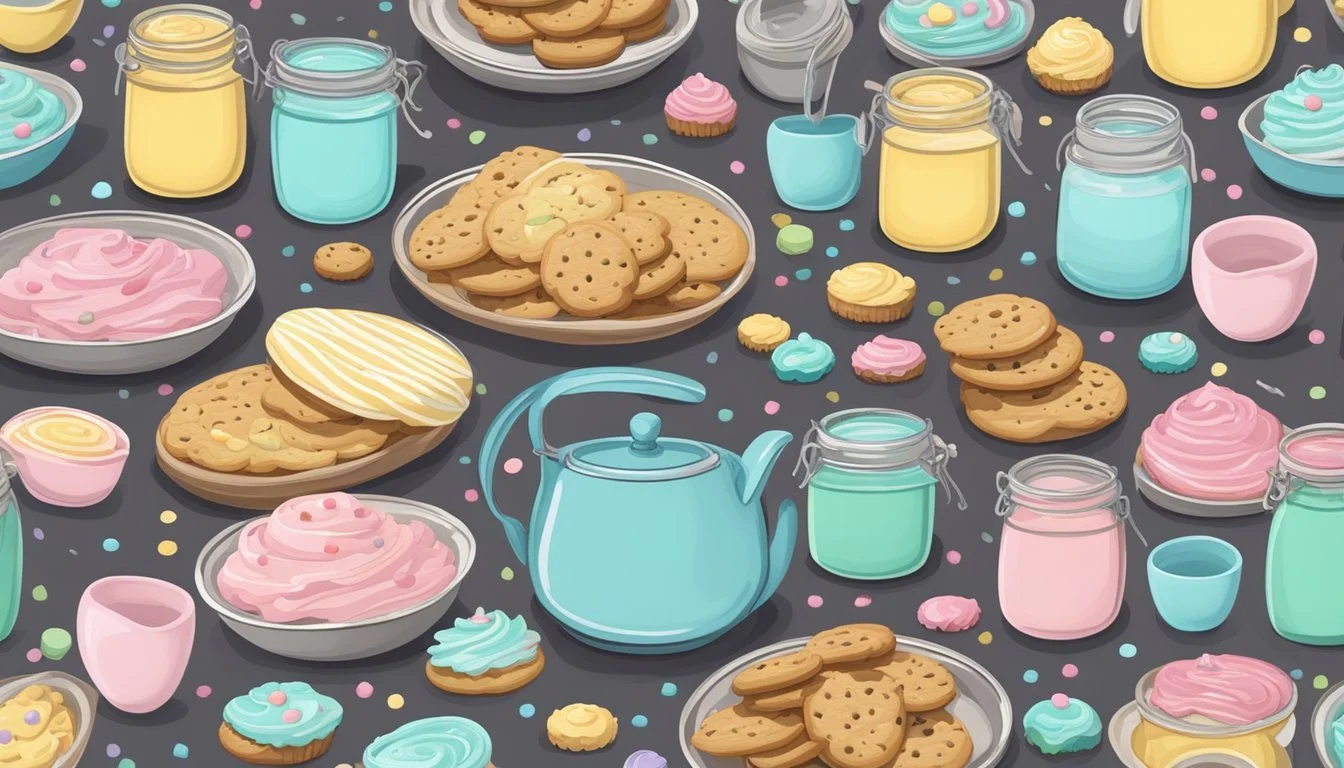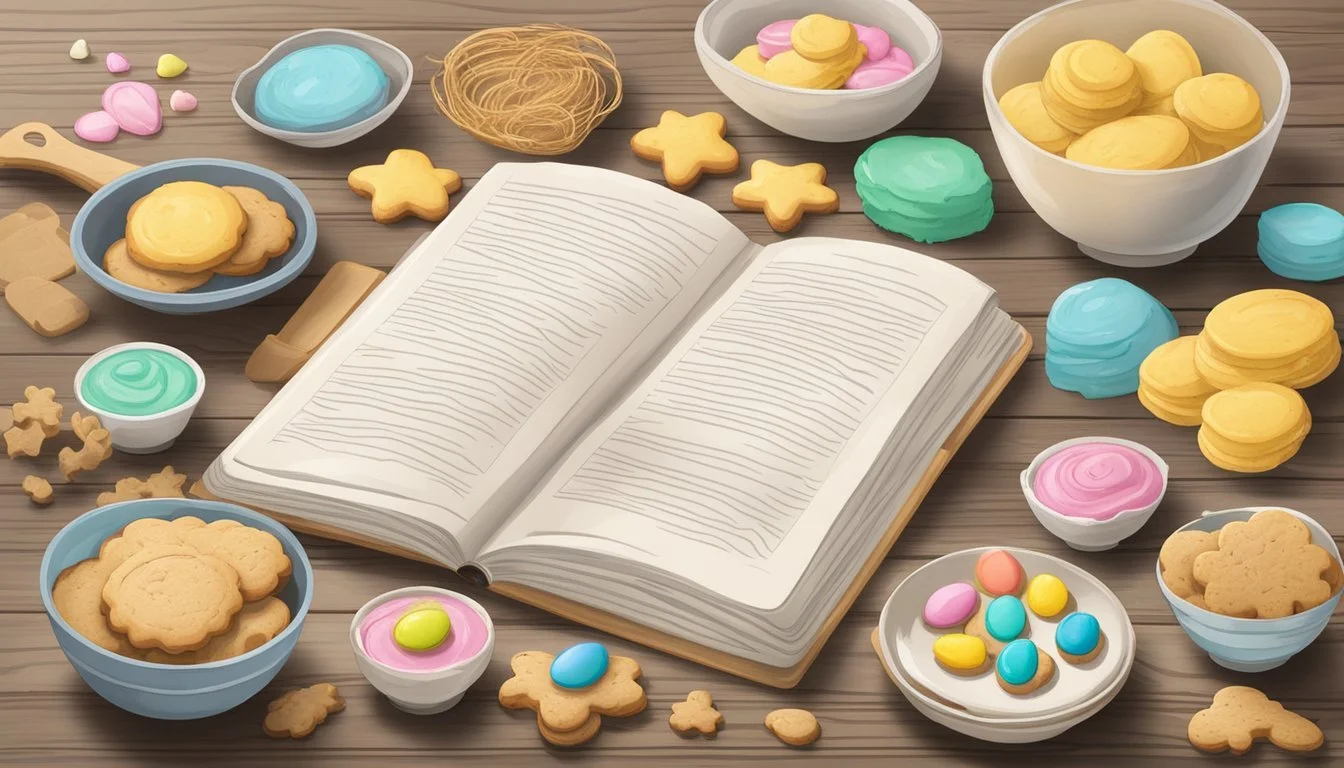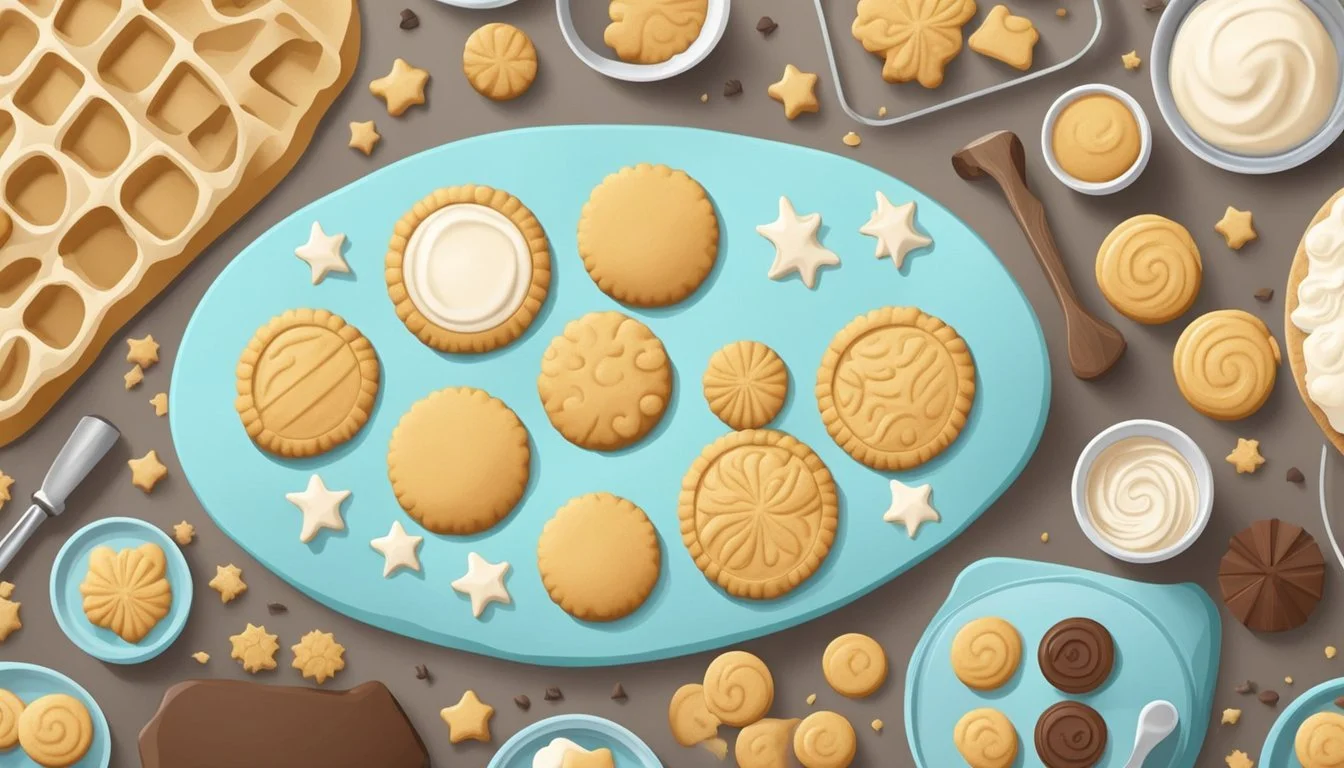Country Easter Cookies
Mastering Festive Shapes and Icing Techniques
Country Easter cookies are a delightful way to celebrate the holiday, combining the rustic charm of rural baking with the festive spirit of Easter. These cookies often take the form of iconic Easter shapes such as bunnies, chicks, and eggs, making them a perfect seasonal treat. The art of decorating these cookies can be as simple or as sophisticated as desired, with icing techniques ranging from basic glazes to intricate piping that brings these shapes to life. Whether enjoyed as part of an Easter meal, given as gifts, or used as decorations, these themed cookies add a touch of whimsy and sweetness to the holiday.
The tradition of Easter cookies dates back to various cultural practices, but it has evolved into a universal activity enjoyed by families and baking enthusiasts alike. Alongside other Easter customs, decorating cookies provides an opportunity for creativity and togetherness in the kitchen. Moreover, it's an accessible craft; with a few simple tools and ingredients, anyone can transform a batch of plain cookies into a festive array of colorfully adorned treats that are as pleasing to the eye as they are to the palate.
It's essential to start with a reliable cookie recipe that promises cookies that hold their shape during baking. Once baked to the perfect golden hue, the cookies serve as a blank canvas for the icing. The icing itself ranges from royal icing, favored for its smooth finish and firm setting, to buttercream for those who prefer a softer texture. The key to successful decorations lies in mastering techniques such as outlining, flooding, and adding fine details, which collectively elevate the appearance of the cookies. These skills can be learned through practice and can transform a simple country Easter cookie into an edible work of art.
Essentials of Easter Cookie Ingredients
Creating the perfect Easter cookie is all about the precision and quality of ingredients. From choosing the right flour to the finishing decorative touches, each component plays a critical role in the outcome of your festive treats.
Choosing the Right Flour
All-purpose flour is the cornerstone of cookie-making due to its moderate protein content, which makes it versatile enough for a tender yet sturdy Easter cookie. Measuring flour correctly is crucial—spoon it into the measuring cup and level it off with a knife to avoid a dense dough.
The Role of Eggs in Baking
Eggs bind the ingredients together and contribute to the texture and rise of the cookie. For consistent results, use large eggs at room temperature to ensure they are evenly incorporated into your dough.
Selecting Your Fats
Unsalted butter is preferred for its ability to control the amount of salt in the dough and because it lends a rich flavor and a perfect texture. Butter should be softened but not melted, as the creaming process traps air and helps cookies to rise properly.
Sweetening the Deal
Granulated sugar adds sweetness and also aerates the dough when beaten with butter. Powdered sugar is often used for making icings due to its fine texture that dissolves seamlessly for a smooth finish.
Leavening Agents
Baking powder is a common leavening agent that produces a light and airy texture in cookies. It should be fresh for optimal rise, as it loses potency over time.
Flavor Enhancers
Vanilla extract is a traditional flavor enhancer, imparting a warm, rich taste to cookie dough. Almond extract can offer a unique, nutty flavor that pairs well with vanilla. Lemon zest or juice provides a fresh, zesty kick, perfectly complementing the lightness of spring.
Decorative Elements
Easter cookies are made festive with a variety of decorative elements:
Sprinkles: Easter-themed sprinkles in the shape of eggs, bunnies, or chicks.
Colored Sugar: Adds a sparkly touch and a slight crunch.
Powdered Sugar: For a simple dusting or to make icing.
Coloring Your Creations
Food coloring is essential to achieve vibrant hues for icing. Gel food coloring provides intense color without thinning the icing, allowing for a wide palette of colors to bring your Easter cookies to life. Use it sparingly, as a little goes a long way.
Comprehensive Cookie Recipe Guide
The following guide provides specific instructions and techniques on creating traditional Easter sugar cookies. From selecting the right shapes to achieve that festive touch, to the details of dough preparation and baking, each step is designed to assist bakers in crafting delightful Easter treats.
Classic Easter Sugar Cookies
For the base of Easter cookies, a simple sugar cookie dough is a versatile choice. Here is a streamlined recipe:
Ingredients:
1 cup unsalted butter, softened
1 cup granulated sugar
1 large egg
1 teaspoon vanilla extract
3 cups all-purpose flour
1/2 teaspoon baking powder
1/2 teaspoon salt
Instructions:
In a mixing bowl, cream together butter and sugar with a paddle attachment on a medium-high speed until the mixture is pale and soft.
Add the egg and vanilla extract; beat until well combined.
Gradually mix in flour, baking powder, and salt until the dough comes together.
Notes:
Ensure all ingredients are at room temperature for better integration.
The prep time is approximately 20 minutes, with a cook time of 10-12 minutes, depending on the size of the cookies.
Total time including chilling and decorating is approximately 2-3 hours.
Incorporating Easter Shapes
Utilizing Easter-themed cookie cutters such as egg, bunny, and carrot shapes gives these cookies a festive flair.
Instructions:
Roll out the chilled sugar cookie dough on a lightly floured surface to a thickness of 1/8" to 1/4".
Use cookie cutters to create desired Easter shapes like bunnies, carrots, and Easter eggs.
Transfer the cookies carefully to a baking sheet, placing them at least 1-2 inches apart.
Notes:
Dip the cookie cutters in flour before each use to ensure a clean cut.
If the dough becomes too soft while working, place it back in the fridge to firm up.
Mixing and Chilling the Dough
Properly mixed dough is essential for the perfect cookie texture, and adequate chilling is crucial for maintaining the shape during baking.
Instructions for Mixing:
After combining the wet and dry ingredients, mix until just incorporated. Overmixing can lead to tough cookies.
Once the dough is ready, divide it into two discs for easier handling.
Chilling:
Wrap each disc of cookie dough in plastic wrap.
Refrigerate the dough for at least 1 hour or until firm.
Notes:
Chilling the dough prevents cookies from spreading too much and helps retain the intricate details of Easter shapes.
The dough can be refrigerated overnight and taken out 5-10 minutes before rolling if it's too hard.
This guide aims to equip bakers with the essential steps required for crafting classic sugar cookies shaped into delightful Easter designs, complete with the necessary chilling time to ensure the perfect outcome. Now, these treats are ready to be enhanced with creative icing techniques that will be discussed separately.
Preparation and Baking Basics
Creating Country Easter Cookies involves careful attention to temperature, timing, and technique. The foundation for delightful treats is set long before the decorating begins, with precise practices in oven preparation, dough rolling and cutting, and the use of baking sheets.
Correct Oven Practices
The first step in baking is to preheat the oven. Consistency in oven temperature is crucial for even baking. For most Easter cookies, setting the oven to 350°F tends to be the sweet spot. It's important always to use an oven thermometer to ensure accuracy. Preheating should be long enough that the entire oven reaches the intended temperature, which usually requires at least 15 minutes.
Rolling and Cutting Techniques
A uniformly rolled dough ensures even baking and a consistent mouthfeel. Utilizing a rolling pin, roll out the dough to either 1/8" or 1/4" thickness depending on the recipe or personal preference for crispier or softer cookies. After rolling, using cookie cutters with Easter motifs can bring festivity to life. For ease of transfer and retaining the shape, chill the cut-outs on the baking sheet—it strengthens the dough and preserves detailed edges during baking.
Optimizing Baking Sheets
To optimize results, line baking sheets with parchment paper to prevent sticking and to simplify cleanup. Spacing is essential; cookies should be placed at least 1-2 inches apart to allow for expansion and even heat distribution. It’s ideal to employ multiple baking sheets if available to avoid crowding and to rotate them midway for uniform color and flavor development. If one prefers crisper cookies, they can bake them a minute or two longer, watching closely to avoid over-browning.
Mastering Royal Icing
Royal icing is a versatile decoration tool for sugar cookies, allowing for intricate designs and a smooth finish. Its ability to harden to a candy-like consistency makes it ideal for decorated cookies. The following subsections will guide you through achieving the perfect icing consistency and an effective application technique.
Creating the Perfect Consistency
Achieving the right consistency of royal icing is crucial for successful cookie decoration. For outlining, one needs thicker icing, while a thinner consistency is ideal for flooding, which is filling in areas bounded by the outlines.
Stiff Consistency: This is used for details that need to maintain their shape, such as dots or lines that stand above the cookie surface. To prepare stiff icing, beat together egg whites or meringue powder with water until foamy before gradually adding sifted powdered sugar until it forms peaks that stand straight when the beater is lifted.
Flood Consistency: For covering larger areas, royal icing should be thinned to a honey-like consistency. A small amount of water is commonly added until the icing drizzles back into the bowl and smooths out within about 10 seconds. This test ensures the icing will settle properly without running off the cookie.
Applying the Icing
The application of royal icing is just as important as its consistency. Using the correct tools and techniques can turn a plain sugar cookie into an Easter celebration.
Outlining: With a piping bag fitted with a small nozzle, one outlines the desired shape on the cookie. This border creates a barrier to prevent the flood icing from spilling over.
Flooding: To fill the area within the outline, one uses a piping bag or a squeeze bottle to apply the flood consistency icing. It is often spread evenly with a small offset spatula to reach all corners and edges.
Layering and Detailing: After the base layer dries, additional layers of icing can be piped on top to create dimension or fine details, requiring precision and a steady hand.
By mastering these royal icing techniques, decorators can create beautifully decorated Easter cookies with sharp detailing and a glossy, professional appearance.
Decorating Techniques and Tips
When it comes to decorating Country Easter Cookies, precision in icing application and creative designs make all the difference. These tips will enable bakers to create eye-catching cookies with ease while ensuring their creations stay intact during storage.
Icing Application Styles
Flood Icing: This is a popular base technique where thin, runny icing is used to cover the entire surface of a cookie. For a smooth application, outline the cookie shape with icing first, then fill in the center.
Wet-on-Wet Technique: To make designs like polka dots, apply a second color of flood icing directly onto wet icing. This technique beautifully combines colors smoothly.
Piping Detail: For intricate borders or fine details, opt for thicker royal icing. With a fine-tip piping bag, this enables the decorator to add text, outlines, or decorative patterns.
Advanced Decorating Ideas
Brush Embroidery: With a paintbrush and slightly stiffer icing, create lace-like patterns that imitate the look of embroidery.
Marbling: Drizzle or swirl different colors of icing together on a cookie's surface to achieve a marbled effect. Use a toothpick to fine-tune the marbled appearance.
Layering: Let the first layer of icing dry completely before adding another layer on top. This prevents colors from bleeding into each other and helps preserve the design's integrity.
Storing and Stacking Decorated Cookies
Airtight Storage: Keep decorated cookies in an airtight container to maintain freshness. Buttercream icing should set slightly before storing to prevent smudging.
Storing before stacking: If one intends to stack cookies, ensure the top layer of icing is completely dry. Soft icing may lead to damaged designs.
Using Parchment Paper: Place a sheet of parchment paper between each layer when stacking cookies to prevent them from sticking to one another.
By following these techniques, decorators can achieve elegant and vibrant Easter cookies. Remember, practice and patience are essential to mastering these decorating tips.
Extra Considerations
When preparing Country Easter Cookies, certain steps can simplify the process and enhance the final presentation. These considerations revolve around timing and presentation, influencing both the ease of preparation and the joy of sharing.
Making Easter Cookies Ahead
Time Management: To alleviate the rush before Easter festivities, bakers can prepare sugar cookies in advance. Once cooled, the cookies can be flash-frozen on a baking sheet, then transferred to airtight containers to freeze for up to 3 months. This not only preserves the flavor but also ensures they are as fresh-tasting as when first baked.
Action Benefit Freezing Dough Extends preparation time over weeks. Baking in Advance Reduces stress close to events. Flash-freezing Maintains cookie integrity and flavor.
Packaging Cookies as Gifts or for Events
Presentation and Storage: Proper packaging is key for gifting or displaying cookies at events. Cookies should cool completely to prevent condensation inside the packaging, which could soften them. Using cellophane bags or boxes with a clear window allows for a glimpse of the decorated cookies, making them a tantalizing gift without adding extra calories.
Packaging Type Considerations Cellophane Bags Showcases cookie designs; provides easy transport. Cookie Boxes Protects shapes; stackable for events
For those aiming to present their cookies during Easter brunch or other gatherings, coordination with the event's theme can add a personal touch to the gift or table setting. If cookies are to be enjoyed later, ensure to include a note with storage instructions. Cookies typically remain fresh in an airtight container at room temperature for up to a week, making them an easy-to-make treat that's also convenient to store and enjoy.
Appendix: Tool and Technique Glossary
This appendix serves as a quick-reference glossary, detailing essential tools and ingredient nuances that can significantly impact the outcome of country Easter cookies.
The Role of Mixers
Mixers, both hand mixers and stand mixers, are pivotal in crafting the perfect cut out sugar cookie dough. They efficiently combine ingredients to a consistent texture, which is crucial for rolling and cutting cookies into festive shapes. A stand mixer is excellent for larger batches, offering a sturdy, hands-free option. Conversely, a hand mixer is portable and adequate for smaller, quicker tasks.
Understanding Sugar Varieties
Sugar plays multifaceted roles in desserts, especially cookies. Granulated sugar is a standard sweetener for cookie recipes, giving structure to the dough. However, for decorating, powdered sugar is ideal, especially when making icing due to its fine consistency and ability to dissolve smoothly. Recognizing the different sugar types is essential for both the texture of the cookie dough and the aesthetic finish of the icing.








